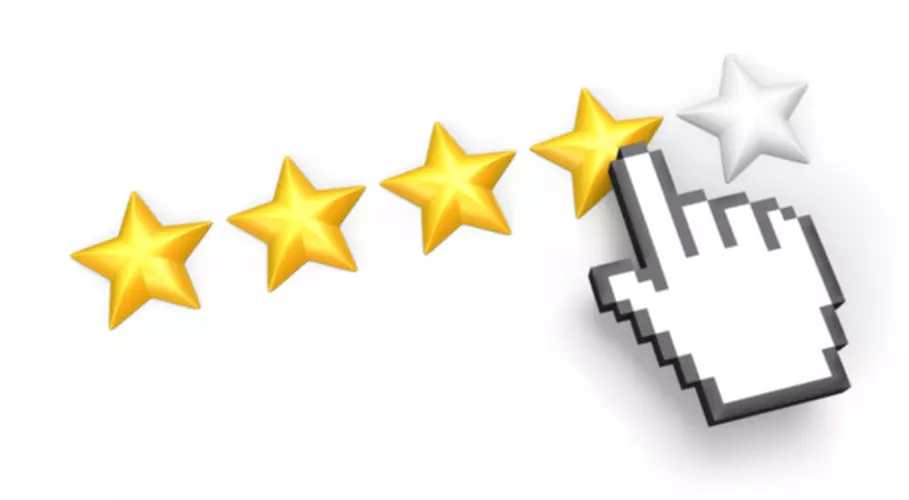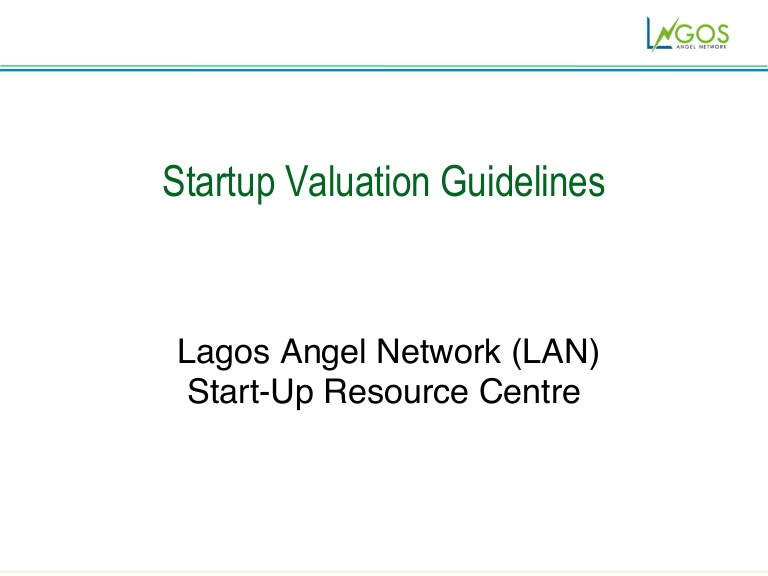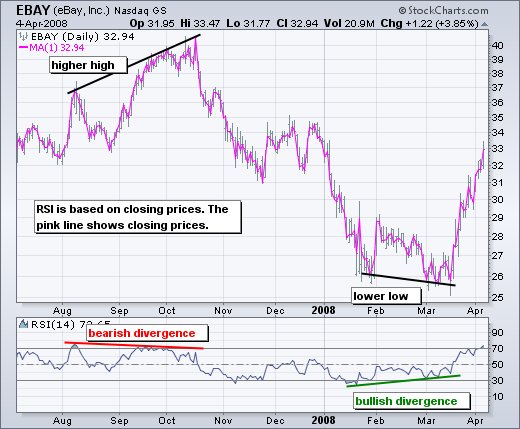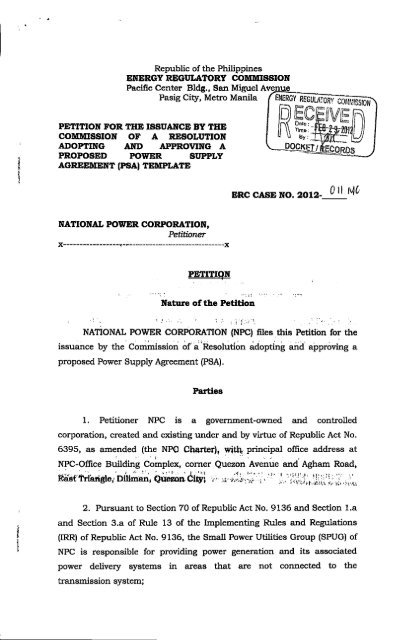Category Archives: Bookkeeping
Petty Cash Policy Office of Ethics, Compliance & Privacy The George Washington University
Content

petty cash funds are useful alternatives to writing checks or using your business credit card to cover small expenses. Petty cash funds are used to purchase items for your business, reimburse employees who purchased business items, or to make change. You typically evaluate your petty cash fund at the end of each month for more accurate balances. Remember to record petty cash expenses in your accounts as journal entries. A designated employee, the petty cash custodian, accounts for your business’s use of petty cash. When an employee takes money from the petty cash fund, the petty cash custodian must record who took the money, the amount taken, what the money is for, and the date. Read on to learn about establishing a petty cash fund, handling petty cash accounting, reconciling your petty cash account, and claiming a tax deduction.

Like any other type of transaction, you must record petty cash transactions in your small business accounting books. Your petty cash custodian should be the only employee distributing petty cash. Your petty cash custodian determines if the expense is appropriate according to your business’s petty cash policy.
Improving Government
At this time, the total of all of the receipts is calculated to ensure that it matches the disbursed funds from the petty cash drawer. If new funds are needed, the cashier writes a new check to fund the petty cash drawer and takes, in exchange, the receipts from the purchases that depleted the cash. DateAccountNotesDebitCreditXX/XX/XXXXPetty CashAdding to petty cash accountXCashXWhen the petty cash fund gets too low, you must refill it to its set amount.
The receipts should show the date, recipient, purpose, and amount of each cash disbursement. These receipts must be signed by the person receiving the money, stamps, etc. The receipts should be perforated or canceled by some other appropriate means to prevent reuse. At the time of replenishment, the custodian should ensure that the balance remaining in petty cash, together with the amount of the replenishment voucher, equals the authorized balance. A petty cash custodian should be designated to safeguard and make payments from this fund.
Establishing Internal Controls for Petty Cash Funds
The English word “petty” derives from the French petit, which means “small” or “little.” Likewise, “petty” means minor or insignificant. So https://www.bookstime.com/ refers to a small sum of money set aside for trifling or little purchases, as opposed to major expenses or bills. Petty cash is a nominal amount of money readily accessible for paying expenses too small to merit writing a check or using a credit card. Avoid delays when making urgent purchases like catering for meetings. Transfer money to cards instantly, or set up low-balance top-ups so cards never run out of funds. Issue physical cards to teams and groups, as well as individuals.
- Petty cash funds are used to purchase items for your business, reimburse employees who purchased business items, or to make change.
- BlackLine solutions address the traditional manual processes that are performed by accountants outside the ERP, often in spreadsheets.
- BlackLine’s foundation for modern accounting creates a streamlined and automated close.
- Petty cash funds must be closed out and reconciled at the end of each fiscal year.
- Petty cash or a petty cash fund is a small amount of money available for paying small expenses without writing a check.
- For example, if you have decided on a petty cash fund for $100, your petty cash account book entry will show a debit of $100 to your petty cash fund and a credit of $100 to your bank account.
Appraisal Reports: Everything You Need to Know Standard Valuation Services
Content
We were told that most reports reviewed by lenders are deficient in this aspect. I admit that my reports need improvement in that kind of presentation – although over the years many ‘official reviewers’ have said my reports are pretty thorough and well written. Real estate properties, while material assets, are not immutable. They change over time, being put to different uses by different landlords. When assessing an appraisal report, look for the following items. You feel confident that the document you are consulting adheres to USPAP’s best practices. Look first to these sections or elements of your appraisal report to begin extracting the most value from its valuations.
If they were more than 6 months to 12 months old, they may not reflect current cap rates especially in changing economic times. Your trusted source for certified business appraisal reports. By cutting down the research and valuation process, the cost of a drive-by appraisal will rarely exceed $275. However, keep in mind that lenders typically require full-service appraisals in order to underwrite and approve the buyer’s mortgage loan program. The next section of the appraisal is a description of the physical improvements. These improvements include any structure on the site as well as any improvements added to the site, such as parking lots, utility lines, storm drainage and landscaping. Each improvement has its own specific characteristics that should be analyzed by the appraiser.
Five Characteristics of an Outstanding Appraisal Firm
Stand out and gain a competitive edge as a commercial banker, loan officer or credit analyst with advanced knowledge, real-world analysis skills, and career confidence. Cover Page – Introduces the appraiser and their firm, as well as the date the inspection was completed. The appraiser conducting the estimate of value must be completely independent of all other stakeholders in the transaction. An appraisal is best defined as an expert’s estimate of the value of “something.” Within the context of business and finance, that “something” is usually an asset . Finally present your final value estimate in a definitive, unqualified statement. The Income Approach, based upon the capitalization of net income. Project influence on Use – The report should state, when appropriate, that the appraisal will disregard any decrease or increase in the utility of the property as a result of the project for which the property is being acquired, other than physical deterioration.
Reconciliation and Final Estimate of Value – The process of reconciliation occurs throughout the appraisal process, but reporting reconciliation of the approaches to value typically occurs at the end of the report. Even when you use a single approach to value, the reconciliation section of the report serves as a summary of the most pertinent data of that particular approach and as the appraiser’s final conclusions to his opinion of market value. However, for an apartment complex or condominium, the income capitalization approach works like the cost approach, except the final valuation is modified by the capitalization rate. To calculate the capitalization rate, appraisers will divide the net operating income of the property by its current market value. A high capitalization rate will typically mean a higher valuation, and vice versa. Land that has been graded and prepared for a specific purpose is typically referred to as a site.
Appraisal report definition
Only clients and those they specifically authorize receive copies of the appraiser’s report. Appraisers must have verbal or written permission from clients to release reports to other parties. Lenders summary appraisal report who may be considering providing a loan for the purchase of a property and who might need to understand their position should the borrower default will want the more detailed Appraisal Report.
- The bankruptcy appraisal report should distinguish the concept of cost from the concept of value.
- The Sales Comparison Approach to Value There are three main approaches to value employed by commercial real estate…
- Additionally, appraisers are required to “summarize” their findings for each Appraisal Report, meaning supporting documentation now may be kept in a separate work file.
- 4) Market conditions.What a meteorologist is to the weather, the appraiser is to the economic forces affecting real property transactions.
- Lets face it, no matter how much appraisers explain, there will always be some knucklehead who will request more information and explanation, and most of the time, its only going to be a request to justify their existence.
- I have taken into consideration the factors that have an impact on value in my development of the estimate of market value in the appraisal report.
Many reports fail to discuss trends or support them. A Conclusion https://personal-accounting.org/ of Value can be presented in either a Detailed or Summary Report.
The Income Approach
Standard documentation for a concise narrative appraisal report. It has a lower level of detail and contains only a summary of the data and analysis collected, used in the determination of value. A Restricted Use Appraisal Report is an appraisal prepared under Standards Rule 2-2 of an appraisal performed under Standard 1 of the Uniform Standards of Professional Appraisal Practice. A Restricted Use Appraisal Report contains statements of the appraiser’s findings without explanation of data, reasoning or analyses that were used to develop the opinion of value. All of the supporting data, reasoning and analyses in support of the appraiser’s finding are retained in the appraiser’s work file.
Used for all properties but usually excluded in the valuation for common forms of real estate. Its application and findings are usually relied upon for special purpose facilities.
The statement of the professional qualifications should describe the appraiser’s education and training, experience and expertise, and professional credentials and designations. For bankruptcy appraisals, this statement should emphasize the appraiser’s experience in conducting bankruptcy appraisals and experience appraising properties like the subject property. The income multiplier or capitalization rate is derived from comparable sales with the same potential for future income. The bankruptcy appraisal report should discuss both the current ownership of the subject property and the history of recent sales of the subject property. That’s a pretty short definition, but an accurate one. In order to develop an Appraisal Report, an appraiser must complete an appraisal. The appraisal is a process starting with the engagement of the appraiser to complete the assignment and is comprised of all the steps taken to develop the final opinion of value and deliver a completed report.
By partnering with a full-service UpNest network agent, you’ll not only benefit from a steady stream of practical valuation and appraisal advice, you’ll also gain access to UpNest’s exclusive selection of agent offers and private cost-saving arrangements. The expected cash flow is a representative income projection. Confusion between the terms appraisal and valuation began in the early 1990s when lenders started using the term evaluations , implying that they were not appraisals. The appraisal community and the Appraisal Foundation have addressed this issue at length, and a valuation now is considered equivalent to an appraisal.
Examples of Summary Appraisal in a sentence
Virtually all communities have zoning ordinances that control land use in their jurisdictions. Zoning ordinances vary widely from one community to another both in land-use classifications and methods of implementation. A floor plan is the architectural drawing that shows the floor layout of a building including the exact room sizes and the special relationships of the rooms. Catalysts for significant changes to the valuation process.
- 4.When a DCF is used, especially a 10-year forecast, if the rents increased every year and often faster than the operating expense increases, that is a good clue that the appraiser was trying to abnormally increase the property’s value.
- Maybe THEY should look for other work if doing THEIR jobs is too difficult for them.
- Exhibit 2 presents a listing of data that appraisers typically consider in a market area, city, neighborhood and location analysis.
- However, during a difficult market, motivated sellers may wish to pay the appraisal report fee themselves in order to substantiate their asking price and/or lower buyer closing costs.
- If I label mine as temporary day labor disposable hero addenda?
How Much Does QuickBooks Online Payroll Cost?
As a Priority Circle member, you get access to a dedicated customer success manager who can assist you with any questions or issues you have with your software. You will get priority support through chat and phone, with shorter wait times than non-Priority Circle members. Most small businesses will find Plus the perfect fit, but there are many reasons you may want to upgrade to Advanced, especially now that several new features have been added. It now offers fixed asset accounting, estimated vs actual cost reporting, and multi-company report consolidation. These can be useful for companies with more complex business structures and accounting workflows.
The software must have bank integrations to automatically feed bank or card transactions. The bank reconciliation module must also let users reconcile accounts with or without bank feeds for optimal ease of use. Advanced also removes the limitations on the number of classes, locations, and charts of accounts, making it ideal for businesses with a growing staff.
The Best Payroll Software For Small Businesses
- Most importantly, Plus will separate the cost of your ending inventory from COGS using first-in, first-out (FIFO).
- With five plans, each at different price points, users can choose the plan that best meets their business needs without paying for additional features that they don’t want.
- QuickBooks Plus is the most popular plan for businesses since it includes features such as inventory tracking, project management and tax support.
- Payroll software with more advanced features like ADP or with full PEO options like Paychex might be a better fit.
- Plus, with access for up to 40 users, Enterprise can scale with your business as it grows.
- If you invoke the guarantee, QuickBooks will conduct a full n evaluation of the Live Bookkeeper’s work.
Batch expensing allows you to record and categorize multiple expenses at once instead of entering them individually. This is especially useful if you have many expenses to record, such as business travel expenses, office supplies, and equipment purchases. You can upload expense receipts in bulk, categorize them according to the appropriate expense account, and then submit them for approval. Simple Start runs basic reports, including cash flow statements, profit and loss (P&L) statements, and balance sheets. Some of the the difference between gross and net revenue other 20-plus built-in standard reports available include P&L by month and customer, quarterly P&L summaries, and general ledger. If you’d like additional help, there are tutorials available on a wide range of accounting terms, skills and how-tos in our QuickBooks Tutorials section.
App integration
QuickBooks Simple Start is a double-entry accounting system, which is an advantage over QuickBooks Solopreneur. You can create basic asset and liability accounts in the chart of accounts (or use the existing ones) to track things like bank accounts, cash on hand, A/R and A/P, credit card balances, and loans. If you use QuickBooks Payroll, payroll liabilities like taxes and deductions will be tracked automatically.
QuickBooks Online Simple Start vs Essentials
Users can tailor their reports by filtering and grouping data and creating custom fields and dashboards. Additionally, Advanced lets you generate multi-company reports and schedule emailed reports to be sent to specified email addresses. Our internal case study compares the four standard QuickBooks Online plans for small businesses across major accounting categories and functions to help you decide which one fits your needs. We excluded QuickBooks Solopreneur because it’s not a double-entry accounting system. QuickBooks Solopreneur works well for one-person businesses, especially if your bookkeeping knowledge is limited or if you need to separate your business and personal expenses.
Merchant Maverick’s ratings are editorial in nature, and are not aggregated from user reviews. Each staff reviewer at Merchant Maverick is a subject matter expert with experience researching, testing, and evaluating small business software and services. The rating of this company or service is based on the author’s expert opinion and analysis of the product, and assessed and seconded by another subject matter expert on staff before publication. Merchant Maverick’s ratings are not influenced by affiliate partnerships. Whether QuickBooks Online is a better deal than QuickBooks Desktop depends on the needs of your business. QuickBooks Online can be a more cost-efficient option for businesses with multiple users that don’t want to navigate the steep learning curve of QuickBooks Desktop.
While we all understand the drive to save money, it’s worth noting that budget shouldn’t be the only determining factor in selecting your payroll software. Payroll software with more advanced features like ADP or with full PEO options like Paychex might be a better fit. Make sure to do your research before deciding which payroll option is right for your business, so that you can get the most bang for your buck. Gusto offers four pricing plans with pricing starting at $40/month + $6/month per person. The smaller Gusto plans are cheaper than QuickBooks Online Payroll, though the most expensive Gusto plan is significantly more expensive than the most expensive QuickBooks Online Payroll plan.
Large businesses that need access for up to 25 users will probably want to go with QuickBooks Advanced. If you wanted to add on a payroll plan, both plans require you to pay an additional $45 to $125 a month (discounted to $22.50 to $62.50 for the first three months). Because Plus has more capabilities for tracking your inventory, it can also offer project profitability tracking. You can get detailed reports on budgeting and classes to see how much money you’re making and where it’s coming from. Paying your freelancers is also easy relevant information thanks to 1099 contractor management features.
Service or project-based businesses should choose accounting software that can track project costs, revenues, and profits. The software must have tools to track time, record billable hours or expenses, send invoices for progress billings, or monitor project progress and performance. Larger businesses with substantial accounting teams may want pharmacy accounting to consider the QuickBooks Advanced plan. It covers up to 25 users and provides dedicated customer support and advanced reporting features. QuickBooks is a well-established accounting software that is widely used by businesses from a variety of industries.
Best Credit Cards To Look Forward To In 2024 Forbes Advisor INDIA
Loaded in INR, it operates seamlessly in over 150 countries with automatic currency conversion. Swift digital onboarding via the Niyo Global App, a zero balance savings account option, and competitive interest rates up to 6.5% enhance user flexibility. Security features like card locking, real-time tracking, and an in-app currency converter provide added assurance. So using that example could you give a rough ballpark on what the salesman would make if they did 25mm in sales credits.
- If you have a complete and accurate sales journal, it will make preparing your business taxes much easier come tax time.
- Credit sales are often seen in everyday life, with large-value purchases such as cars and sofas often involving some form of credit sale.
- Does the compensation structure for sales people differ between products?
- For example, if you notice that your sales spiked during a certain week in the past, you might want to try to replicate that promotion or sale again.
- This means that the entire amount is due in 90 days, but if the customer is willing to pay in 30 days or less, a discount of 5% will be applied to the transaction value.
Allowances are usually the consequence of transportation issues that cause a corporation to reconsider its shipment or storage practices. To stay competitive in their sector, companies that give discounts may opt to cut https://simple-accounting.org/ or expand their discount terms. Allowances for net sales are typically distinct from write-offs, which are sometimes known as allowances. A write-off is a cost deduction that reduces the value of an asset in inventory.
Is it difficult to set up a Credit Sale?
For example, with the Discover it® cash back credit card, you could earn 5% cash back on everyday purchases at different places you shop each quarter, up to the quarterly maximum when you activate. The Dhanlaxmi Bank Platinum Credit Card offers a streamlined yet comprehensive set of features to enhance the cardholder’s financial experience. With a generous 5% cash back on supermarket and departmental store purchases, the card rewards everyday spending. It further prioritizes cardholders’ financial security through coverages such as credit shield (up to INR 1 lakh), purchase protection (up to INR 1 lakh), and air accident insurance (up to INR 20 lakh). Ideal for international travelers, this card ensures cost-effective foreign transactions with zero forex markup fees.
Someone on our team will connect you with a financial professional in our network holding the correct designation and expertise. We follow strict ethical journalism practices, which includes presenting unbiased information and citing reliable, attributed resources. At Finance Strategists, we partner with financial experts to ensure the accuracy of our financial content. The articles and research support materials available on this site are educational and are not intended to be investment or tax advice. All such information is provided solely for convenience purposes only and all users thereof should be guided accordingly.
Offering credit to business customers is a common practice among many businesses. This can help businesses increase their customer base by allowing them to offer payment plans, which makes them more affordable for customers.On the downside, offering credit sales still comes with risks. Sales credit journal entries are also commonly used when businesses offer finance to customers.
Professional services
Deskera People helps digitize and automate HR processes like hiring, payroll,leave, attendance, expenses, and more. Simplify payroll management and generate payslips in minutes for your employees. Charlene Rhinehart is a CPA , CFE, chair of an Illinois CPA Society committee, and has a degree in accounting and finance from DePaul University. There is no question that credit control is a critical part of any business. A financial professional will offer guidance based on the information provided and offer a no-obligation call to better understand your situation.
Terms Similar to Credit Sales
For example, let’s say you sell cars and offer customers the option of financing their purchase over three years. To record the sale, you would make a sales credit journal entry that includes a debit to Accounts Receivable and a credit to Sales. Allowances are less frequent than refunds, although they may be necessary if a corporation seeks to reduce previously booked income. A seller may offer a partial refund to a buyer who claims that products were damaged during shipment or that the wrong goods were received in order. A seller would need to credit an asset account and debit a sales returns and allowances account. Furthermore, it assists management in gauging and measuring the total receivables owed and therefore keeping track of the same so that no further liquidity constraint is produced as a result of such actions.
What are some common examples of credit sales?
Product life cycles can also help you when it comes to purchasing used appliances. The back-to-school seasons can be a great time to get deals on some appliances. Because many students need appliances for their dorm rooms and apartments, some appliance retailers will offer good discounts on appliances during the back-to-school months of August and September. You may be able to find a great deal on small appliances like minifridges, microwaves, and toasters during this time. In 2024, the credit card market is anticipated to introduce a wave of options designed to cater to diverse lifestyles and spending preferences. From enhanced rewards programs to exclusive perks, the upcoming year holds the promise of a dynamic selection of credit cards that aim to redefine the way individuals manage their finances.
When the seller receives payment from the customer, the seller will debit Cash and will credit Accounts Receivable. Late payments are a scourge on small businesses, siphoning away vital cash flow that you need to keep your… Book a demo with Chaser today to see how easy it is to manage your credit sales with our platform. As a result, some firms have a substantial portion of their current assets in the form of accounts receivable. Thus, the total aggregate downward adjustment to the gross sales made on credit is $4 million, which we’ll subtract from our gross sales of $24 million to arrive at a net amount of $20 million.
In a cash-tight economy, this is an essential aspect of overall cash management. Either the ending or average A/R balance can be used in the formula, but the difference (and the takeaways) are marginal — unless there is a clear shift in the A/R balances due to operational changes. Hitesh Bhasin is the CEO of Marketing91 and has over a decade of experience in the marketing https://accounting-services.net/ field. He is an accomplished author of thousands of insightful articles, including in-depth analyses of brands and companies. Holding an MBA in Marketing, Hitesh manages several offline ventures, where he applies all the concepts of Marketing that he writes about. Access and download collection of free Templates to help power your productivity and performance.
If you are a business owner, then you know that it is important to keep track of your credit sales. Recording credit sales in a journal entry is simple and can be done in just a few steps. In this blog post, we will go over the steps for recording a credit sale in your journal and how to properly account for it. The ABC Enterprise is a furniture selling company https://online-accounting.net/ that generated $100,000 of gross sales in its most recent month. During the month, ABC issued a refund of $5,000 to a customer who returned a furniture, and also granted a sales allowance of $1,000 to a customer in exchange for not returning a furniture having a fault. It is necessary to first determine gross sales before determining net credit sales.
Unbeatable property management software for agents
Content
- Align your real estate with your dynamic business needs
- LeaseEagle
- Learn more about our Open Application Platform
- Lease Accounting software enables companies to manage their lease portfolio and comply with current lease accounting standards.
- What is Real estate accounting software?
- Mi Property Portal
Switch to AccountsIQ Our uniquely simplified platform enables smooth migration from your legacy or entry level software to our award-winning cloud platform with migration tools and services assuring your transition. Any property investor knows the burden of paperwork can be high. Not only do you need to keep on top of rental agreements and tenant payments, but you also need to track expenses, file taxes, and run reports to scale your business. The best accounting software for property investors keeps you well-organised so that no fine detail falls through the cracks.
- This type of pricing aims to democratize pricing so both smaller and large users can pay proportionately to their usage.
- Create professional marketing reports to get funding for your rehab projects.
- Our staff had used it previously and were happy to recommend it – and I’d definitely do the same.
- Tools which collect anonymous data to enable us to see how visitors use our site and how it performs.
Another benefit to QuickBooks is the fact that it’s accessible to your existing accounting team. Invite external accountants to review all documents to make sure our finances are in order. Aside from assisting property managers with their core tasks, however, many property management software solutions will also provide a tenant portal. When present, such a portal is likely to construction bookkeeping include options for communicating with the property manager or their staff and paying rent. This can then make it much easier for tenants to report problems, ask questions, make payments on time, and keep the property manager up-to-date with their intentions for the future. The best PMS solutions work by centralising important information and making key data easily accessible.
Align your real estate with your dynamic business needs
Freemium real estate software refers to programs that have both free and paid solutions. The free versions are either for a limited time period (i.e. 30 day trial) or have access to limited features. Users can pay to upgrade once the trial ends or to add on more features. As we mentioned earlier, if you are looking for an all-in-one property management software that includes an accounting/bookkeeping function, Landlord Vision is the better choice. This means that landlords can take advantage of technology to keep track of how their properties are performing and, for example, check when maintenance needs to be carried out and new rental contracts need to be organised.
Automate consolidation plus a host of other time-saving features for busy multi-entity groups. Access all Xero features for 30 days, then decide which plan best suits your business.
LeaseEagle
Their modern, all-in-one technology platform allows you to manage your business seamlessly from anywhere in the world. We offer our customers modern mobile solutions for, e.g., consumption data and working time management, as well as communication with the residents and much more. View of space utilisation and employee workplace satisfaction across the entire building portfolio. Facility managers can access and manage the request ticketing system, space resources booking, messaging with tenants/occupants/employees and newsfeed. Odessa is a browser-based lease and loan management system designed to support the entire lifecycle of leases, loans, and assets.
Capterra’s property management software directory can assist with this because it includes user reviews for the various software solutions on offer. Better still, these reviews are broken down, and one of the categories users can rate software on is the ease of use. As a result, the platform can serve as https://www.projectpractical.com/accounting-in-retail-inventory-management-primary-considerations/ an invaluable tool for finding the most user-friendly option. Escapia also has strong core functionality such as trust accounting, reservation calendar, distribution, housekeeping, owner portal, & more. Escapia is one of the most trusted and widely used vacation rental software solutions in the industry.
Learn more about our Open Application Platform
Increasing your returns to investors, and exceeding tenant expectations. Finally, manage your business stress-free, stay top-of-mind, and sell confidently. Pricing, PriceLabs, RemoteLock, Kaba, Mailchimp, Stripe, Auth.net and others. Housekeeping app, digital signatures, owner portals, work https://www.icsid.org/business/managing-cash-flow-in-construction-tips-from-accounting-professionals/ orders, travel insurance, damage protection and automated sms and email messaging. TenantCloud is a free cloud service with personal portals for Landlords, Tenants, and ServicePros. It’s the first visual software of its kind and shows you exactly where things stand at a single glance.
What software will an accountant use the most?
- Best Overall: QuickBooks Online.
- Best for Micro-Business Owners: Xero.
- Best for Service-Based Businesses: FreshBooks.
- Best for Part-Time Freelancers: QuickBooks Self-Employed.
- Best Free Software: Wave.
Every large portfolio has multiple complexities in its structures of tenancies and ownerships. There’s no doubting the popularity of online accounts packages such as Xero, Sage and Quickbooks. Request a personal demonstration and get answers to your unique questions to find out why Planon could be the right choice for your business. Please submit your contact information and we will be in touch shortly.
Lease Accounting software enables companies to manage their lease portfolio and comply with current lease accounting standards.
In fact, Quickbooks is probably the best-known of the three brands. Like FreeAgent, it’s not made specifically for landlords and so you get powerful accounting features but none of the specific property management ones. For most landlords, running a portfolio of buy to let properties can be a stressful business but there is help at hand with excellent accounting software packages tailored to meet a landlord’s needs. British property management mandates an astonishing number of different accounting periods; some, such as Quarter Days, date from medieval times. Others derive from more modern bureaucracy, such as service charge periods, VAT accounting quarters, and tax years.
- Look for software that has an easy-to-navigate interface that won’t make completing chores tough and will let you move around the programme with ease.
- GetApp offers free software discovery and selection resources for professionals like you.
- Whether you focus on building or asset operations, maintenance services, support services, integrated facility management or any combination, technology has become a dominant and strategic factor in business growth.
- Reporting A wide range of reports is provided in our library of 250+ financial statements, enhanced by OData links to Excel and Power BI, allowing you to report when and how you need.
Your buildings must do more than retain their value – they must support your core business and comply with stringent legal and regulatory requirements. Faced with tight budgets and demands for comprehensive, accurate and transparent reporting, you need a system that keeps you in constant control of your portfolio. Before committing to a CRM, you of course need to make sure that you are choosing the best property accounting software for you and your company . Let your real estate clients pay promptly, straight from your online invoices, by connecting to Stripe and other third-party payment solutions. Track performance, manage expenses and view client records on the go with easy accounting software for real estate agents. Analyze rehab deals, & estimate repair costs to determine the Maximum Purchase Price you should offer.
Rent online, publish vacancies to your own property management website, track maintenance requests, process online rental applications, and order tenant screening reports. Pricing is based on unit size, so you can easily scale to fit your needs. Arthur is an award-winning property management software designed to save your business time and money by streamlining each stage of the tenancy journey. Boost efficiency, increase your revenue and grow your portfolio. Managing property portfolios is demanding whether working with landlords and tenants or being accountable to investors, generating income from Real Estate Investment Trusts .
What Is a Cash Book? How Cash Books Work, With Examples

All such information is provided solely for convenience purposes only and all users thereof should be guided accordingly. An organized accounting method is a vital aspect of your business. Search Public Authority Financial Information Get debt and summary financial information for State and local public authorities. Search State Payments Find payments made by the State since April 1, 2012. Visualize the way your money moves, and move your business like an expert.
Are there any challenges associated with using a cash payment or cash disbursement journal?
Generally maintained by accounting software, these journals contain essential information such as the disbursement amount, check number, transaction type, payee, payer, and memo. But some businesses record other important details, such as discounts on bulk items purchased. Varying types of expenses may either be listed in different columns create an invoice in word or they may receive distinct codes. You may choose any recordkeeping system suited to your business that clearly shows your income and expenses. The business you are in affects the type of records you need to keep for federal tax purposes. Your recordkeeping system should also include a summary of your business transactions.
- We’ve highlighted some key details about single-, double-, and triple-column cash books with examples of what each looks like below.
- The main source of entries for this journal are check stubs and payment requests.
- For instance, a retailer would have many payments for inventory, accounts payable, and salaries expenses.
- The cash disbursement journal is a detailed record of the cash payments made by a business.
Accounting Ratios
This journal is a good source document for tracking down the specifics regarding individual payments. The information in the cash disbursement journal is periodically summarized and forwarded to the general ledger. Some critical entries in a cash payments journal include the date of transaction, payee name, description, amount paid, mode of payment, transaction ID or number, etc. The double-entry system is mostly followed where the cash account is credited, and the purchase/ payable account is debited. At the end of each accounting period (usually monthly), the cash disbursement journal column totals are used to update the general ledger accounts. As the business is using subsidiary ledger control accounts in the general ledger, the postings are part of the double entry bookkeeping system.
To Ensure One Vote Per Person, Please Include the Following Info
Next, you would specify what the payment was made for by recording the name of the account being debited and its reference (PR) number. Management can use this journal to not only see how much cash has been disbursed, it can also track what cash is being used for. In other words, management can look through the cash disbursements journal and see what ratio of cash is being spend on inventory compared to the amount of cash being spent on paying other bills.
Is there any other context you can provide?
The more details you add to each payment journal entry, the better understanding you’ll have of your cash outflows. Suppose in one month, Company ABC purchases a machine from Manufacturer BZY for $5,000 and rents a truck from Rental Trucks for $500. The company would need to credit its cash balances and debit corresponding accounts. It is not uncommon for a firm to fail to transfer funds from the sub-account to the main account before issuing a check to the client or for the bank to fail to follow an instruction to transfer the funds. You must be able to substantiate certain elements of expenses to deduct them on your tax return.
A bookkeeping expert will contact you during business hours to discuss your needs. 19 January 2023 – Purchased a freezer from PQR and paid $5000 via check no. 123. A financial professional will offer guidance based on the information provided and offer a no-obligation call to better understand your situation. Our mission is to empower readers with the most factual and reliable financial information possible to help them make informed decisions for their individual needs. Our writing and editorial staff are a team of experts holding advanced financial designations and have written for most major financial media publications. Our work has been directly cited by organizations including Entrepreneur, Business Insider, Investopedia, Forbes, CNBC, and many others.
[DR 9-102(b) (3), 22 NYCRR §1200.46(b) (3).] A lawyer who uses his escrow account for the deposit of his personal funds faces serious disciplinary sanctions. This is true even if the lawyer does not misuse any of the trust funds in the commingled account. First, commingling of personal and trust funds may destroy the escrow nature of the account and expose the clients’ funds to the risk of attachment by the lawyer’s or law firm’s creditors. Second, commingling of personal and trust funds makes it much harder to determine if the lawyer has used, or misused, any of the trust funds which were supposed to be held intact.
Use the information from your cash disbursement journal to update your other records. Chartered accountant Michael Brown is the founder and CEO of Double Entry Bookkeeping. He has worked as an accountant and consultant for more than 25 years and has built financial models for all types of industries. He has been the CFO or controller of both small and medium sized companies and has run small businesses of his own. He has been a manager and an auditor with Deloitte, a big 4 accountancy firm, and holds a degree from Loughborough University. The credit to the cash account represents cash paid to suppliers for the period, which decreases the asset of cash.

If a business is using subsidiary control accounts to support the general ledger accounts, the postings are part of the double entry bookkeeping system. All books dedicated to recording specific types of accounting transactions rely on the cash disbursements journal for information. Despite rigorous enforcement, severe sanctions and almost zero tolerance, a troubling number of lawyers still do not know what the escrow account rules are or even where they can be found. As should be evident, while the rules are detailed, they are not impenetrable. Compliance can be achieved by even the most mathematically-challenged lawyer, particularly with the help of readily-available computer software specifically designed for attorney trust accounts. Now is the perfect time to make sure that your firm’s accounts and records fully comply with the rules.
When recording your disbursement journal, pull information from purchase receipts, checkbook stubs, or invoices. Create and update a cash disbursement journal whenever you purchase something with cash or a cash equivalent. If necessary, other specific account columns can be added if they are used routinely.
Im salaried How many hours can my employer require me to work?

This is a matter of agreement between an employer and employee (or the employee’s representative). The FLSA does not limit the number of hours per day or per week that employees aged 16 years and older can be required to work. No, you won’t have to set up time clocks for your executives, but you will have to keep records to make sure these employees are making more than the minimum. You can choose how to keep those records as long as they meet FLSA requirements. In other words, employees whose annual pay is less than this amount must receive overtime.
- However, non-hourly professional workers, including executive, managerial, administrative and professional employees, don’t qualify for the bonus pay unless they earn less than $35,568 a year.
- According to the Department of Labor, “independent judgment” involves evaluating multiple possible courses of action and being able to decide between them.
- The proposal is the latest effort by the Biden administration to increase pay and protections for workers.
- But he must receive the same fixed pay for any week during which he performs any work.
The Labor Department in 2016 doubled the salary threshold to about $47,000. But a federal judge in Texas the following year said that ceiling was so high that it could sweep in some management workers who are exempt from overtime pay protections. Salaried workers who earn above the salary threshold may still be eligible for overtime pay if they do not primarily perform management-related duties. Effective March 23, 2010, employers are required under the FLSA to provide unpaid break time and space for nursing mothers to express breast milk for one year after the child’s birth. Where employers already provide compensated breaks, an employee who uses that break time to express milk must be compensated in the same way that other employees are compensated for break time.
Salary & Overtime FAQs
Some employees on a full salary can still qualify for overtime pay. Several states including California and New York have salary thresholds for determining overtime eligibility that are higher than the current federal standard. The FLSA does not require breaks or meal periods be given to workers. The rule would update the Fair Labor Standards Act to expand overtime eligibility to more people, and ensure salary thresholds that determine overtime access keep up with earnings data. The proposal is the latest effort by the Biden administration to increase pay and protections for workers. President Biden has been outspoken in his support of labor unions, and issued an executive order requiring contractors on federal construction projects worth more than $35 million to reach agreements with unions that determine wages and work rules.
Additionally, many salaried workers carry out odd and sporadic hours both at the office, at home, and while traveling for business so it can be burdensome to record time on and off the job. Raising the salary threshold would make this practice less common by eliminating the subjectivity solvency vs liquidity in determining which workers should receive overtime pay. Instead, many workers — like assistant managers in restaurants — would become eligible for overtime automatically, no matter their job responsibilities. The main rule is that non-exempt employees are eligible for overtime pay.
Do You Need To Track Time for Exempt Employees?
For the FLSA’s purpose, “making” a choice may be the same as “suggesting” one. You may still be eligible for overtime, even if your boss ultimately rejects the decisions you’ve made. But you and I both know that there are many other aspects of “work” that you should include in your work hours. There are other activities around work included in your workweek. Exempt employees must be paid for any week in which they do any work; they don’t have to be paid for a week in which they didn’t work.
3.6 million workers to be eligible for overtime pay under a proposed Biden administration rule – PBS NewsHour
3.6 million workers to be eligible for overtime pay under a proposed Biden administration rule.
Posted: Wed, 30 Aug 2023 15:42:55 GMT [source]
See WHD Fact Sheet # 73, Break Time for Nursing Mothers under FLSA. In addition, the FLSA’s general requirement that the employee must be completely relieved from duty or else the time must be compensated as work time applies. The U.S. Department of Labor requires that employees whose salary is equal to or less than $684 a week ($35,568 annually) must receive overtime, even if they are classified as exempt.
Make Sure Your Business Is Compliant with All Overtime Laws
The FLSA, with some exceptions, requires bonus payments to be included as part of an employee’s regular rate of pay in computing overtime. Generally, if a salaried exempt employee does not work in a particular week, that employee does not have to be paid for that week. However, when taking a partial day off, salaried exempt employees must receive a full day’s pay.

The Employee Benefits Security Administration (EBSA) may be able to assist an employee who did not receive severance pay required in his or her employment contract. You can use non-discretionary bonuses and incentive payments (including commissions) to satisfy up to 10% of the standard salary requirement. To qualify as non-discretionary, the bonuses must be tied to some measures like productivity, sales, or profitability.
How Many Hours Can a Salaried Employee Be Forced to Work?
Additionally, their pay cannot be deducted by their employer if they work less than 40 hours per week, or the employee may be seen as nonexempt and entitled to overtime compensation when working more than 40 hours a week. While a salaried employee is someone who receives a fixed amount of pay regardless of how many hours they work each week, an hourly employee is an employee who is paid for the actual amount of hours they work. Hourly workers are usually entitled to overtime pay if applicable, whereas overtime pay is not typically offered for salaried employees who work over 40 hours per week. Department of Labor issued new regulations around pay for exempt employees that make more employees eligible for overtime pay.

Advocates of a higher cutoff argue that one key benefit would be to prevent employers from misclassifying workers as managers to avoid paying them overtime. Under the Biden administration’s proposal, the overtime limit would automatically adjust every three years to keep pace with rising earnings. The Labor Department will accept public comments for 60 days before issuing a final version of the rule.
What’s the definition of a salaried employee?
The bonuses must also be paid at least quarterly, not just at the end of the year. You can also make catch-up payments toward the previous quarter’s salary. This fact sheet provides general information concerning the application of the overtime pay provisions of the FLSA .
Pay raises to amounts above the Federal minimum wage are not required by the FLSA. Some 3.6 million salaried workers may soon be able to earn overtime pay, according to a new proposal from the Biden administration. Labor advocates and liberal lawmakers have long pushed a https://online-accounting.net/ strong expansion of overtime protections, which have sharply eroded over the past decades due to wage stagnation and inflation. As a business owner, it’s important to make sure that you’re compensating your employees for all time worked—and that includes overtime hours.
Severance pay is a matter of agreement between an employer and an employee (or the employee’s representative). Employees considered to be “bona fide executive, administrative, professional and outside sales employees,” some computer employees, and some employees who are paid a salary equal to no less than $684 per week may be exempt from overtime pay. However, employees may be exempt from overtime on a case-by-case basis, depending on their job duties and the company for which they work.
What Is the Accounting Equation, and How Do You Calculate It?
Content
These two components are contributed capital and retained earnings. Liabilities are obligations to pay an amount owed to a lender based on a past transaction.
https://maps-stamps-memories.com/sabah-museum-kota-kinabalu/ debits and credits must be equal before posting transactions to the general ledger for the accounting cycle. In accounting, the economic resources of a business are categorized under the terms of assets, liabilities, and owner’s equity. These terms also refer to the three types of accounts in which a business records its transactions. When the cash is spent, reducing the assets column to zero, a new asset account for the computer is created to record the dollar amount paid for the laptop. Again, because Shanti doesn’t owe another party at the end of the transaction (because she didn’t make any additional contribution), the balance of the owner’s equity account remains the same. The equation shows that Shanti still owns 100 percent of the assets.
Explaining the Accounting Equation
The initial contribution to the business is recorded in the same way but with the new amount, as shown in Figure 4. Borrowed money amounting to $5,000 from City Bank for business purpose. Sold T-shirts for $800 on credit, the cost of those shirts were $550. Sold T- shirts for $1,000 cash, the cost of those T-shirts were $700. Mr. John invested a capital of $15,000 into his business.
You might also notice that the accounting equation is in the same order as the balance sheet. When a company first starts the analysis process, it will make a list of all the accounts used in day-to-day transactions. For example, a company may have accounts such as cash, accounts receivable, supplies, accounts payable, unearned revenues, common stock, dividends, revenues, and expenses.
Define accounting equation.
These liabilities are third-party claims over the business. Revenues are what any given business earns from its product or service. Expenses are what it costs the business to operate and provide the aforementioned product or service. The relationship between revenues and expenses is simple. If revenues are greater than expenses, the business makes a profit. If revenues are less than expenses, the business incurs a loss. If you know any two of the three components of the accounting equation, you can calculate the third component.
- Total debits and credits must be equal before posting transactions to the general ledger for the accounting cycle.
- Adding up the sum of liabilities and the total owners/shareholders equity, which will equal the sum of the assets.
- The accounting equation serves as an error detection tool.
- The fundamental accounting equation can actually be expressed in two different ways.
- In fact, the equation for determining how much equity a company has is subtracting the company’s liabilities from its assets.
- The most common approach to accounting used in the United States, and around the world, follows the basic formula shown in Figure 1.
The equation states that the total assets of the individual or the business equals the sum of the liabilities and equity. Are resources a company owns that have an economic value. The income and retained earnings of the accounting equation is also an essential component in computing, understanding, and analyzing a firm’s income statement. This statement reflects profits and losses that are themselves determined by the calculations that make up the basic accounting equation. In other words, this equation allows businesses to determine revenue as well as prepare a statement of retained earnings.
Limitations of the Accounting Equation
The reason why the http://www.iawmh2017.org/wp/local-hosts/ equation is so important is that it is alwaystrue – and it forms the basis for all accounting transactions in a double entry system. At a general level, this means that whenever there is a recordable transaction, the choices for recording it all involve keeping the accounting equation in balance. The accounting equation concept is built into all accounting software packages, so that all transactions that do not meet the requirements of the equation are automatically rejected. The laptop still costs $1,000, but the business has only $100 in cash assets.
What is the accounting equation the start of quizlet?
The accounting equation is most often stated as: Assets + Liabilities = Owner's Equity.
The complete, concise guide to winning business case results in the shortest possible time. For twenty years, the proven standard in business, government, education, health care, non-profits. Woofer decreases one of its Current Assets accounts, Cash, for the same amount, $1,180.
What is Accounts Receivables Examples, Process & Importance

The Allowance For Doubtful Accounts is nothing but the estimate of accounts receivable not expected to be paid by the customers for goods sold on credit to them. However, there are times when you purchase goods on credit from your suppliers. Thus, such a credit purchase is recorded as Accounts Payable in your books of accounts. Businesses use accounts receivable to keep track of pending payments from customers.
This decreases the amount of money that was initially owed to your business and brings the balance back down to zero. Receivables are unpaid customer debt for products or services delivered. It is a current asset that affects a business’s liquidity and working capital management. Receivables are shown as current assets on the balance sheet, and the general ledger shows a debit balance.
What is the difference between accounts receivable and accounts payable?
In accounting, confusion sometimes arises when working between accounts payable vs accounts receivable. Mixing the two up can result in a lack of balance in your accounting equation, which carries over into your basic financial statements. To recognize an expense before cash is paid, businesses increase the accounts payable balance. In a similar—albeit exact opposite—way, firms increase accounts receivable when revenue is earned before cash is received. For tax reporting purposes, a general provision for bad debts is not an allowable deduction from profit[5]—a business can only get relief for specific debtors that have gone bad.
- If you enforce a policy, people will either start to pay you on time, or stop doing business with you (which may be fine, if they always pay late).
- Accounts receivable turnover measures how efficiently your business collects revenues from customers to whom goods are sold on credit.
- Since billing is done to claim the advances several times, this area of collectible is not reflected in accounts receivables.
- Likewise, when you sell on credit to different customers, it will be added to the overall accounts receivable and when you receive from the customers, it will be reduced.
- Accounts receivable refers to money customers owe your business so it is considered an asset.
Further, as mentioned earlier, there is a risk of non-payment attached to some of your accounts receivable. Therefore, as per the Accrual Accounting System, your Accounts Receivable account is reduced by the amount set aside as Allowance for Doubtful Accounts. Also, use your credit policy as an opportunity to outline your ideal debtor’s qualifications and requirements, only accepting applicants who meet this profile and can fulfill payments. You can transfer it to collections, where a collector will try to connect with the customer and work with them to collect the payment. If you don’t receive and apply payment by the agreed-upon date, the customer’s account becomes delinquent.
What Do Accounts Payable and Accounts Receivable Have in Common?
In a perfect world, a business can increase credit sales to customers who pay faster, on average. When a company owes debts to its suppliers or other parties, these are accounts payable. To illustrate, imagine Company A cleans Company B’s carpets and sends a bill for the services. Company B owes them money, so it records the invoice in its accounts payable column.
Financial statements for the three months ended June 30, 2023 – osfi-bsif.gc.ca
Financial statements for the three months ended June 30, 2023.
Posted: Wed, 30 Aug 2023 09:12:45 GMT [source]
A promissory note helps enforce your legal claim to payment from the debtor. As per Accrual System of Accounting, you record Allowance for Doubtful Accounts so that you get an understanding of the amount of bad debts that can occur in future. Let’s consider the above example again to understand what is accounts receivable and the journal entry for accounts receivable. Oversee your accounts receivables efficiently with the information above and by following the ‘how-to’ tips we’ve provided. Managing a business requires a steady balance between flexibility and regulation.
When accounts payable and accounts receivable are in balance, a business can plan ahead for growth. If out of balance, immediate attention is needed to regain financial wellbeing. The longer your A/R remains unpaid, the more difficult it will be to arrange funds for manufacturing goods for further sales. Uncollected payments reduce working capital and delay business cycles. Collecting all unpaid dues should be a top priority to have a better cash flow.
How to optimize your accounts receivable process
They are considered assets on a balance sheet, with expected payments within a year. It’s important for business owners to manage their accounts receivable properly, from initial credit application to collection of the accounts receivable balance. If you’re concerned about how quickly your customers are paying, calculating your accounts receivable turnover ratio can provide some insight. Customers are given resources like electricity by power companies, who bill the customers after they have used the resources (electricity). Unpaid invoices will be recorded in the accounts receivables section of the balance sheet while the companies wait for payment for the utilities delivered. A company that keeps track of accounts payable will be able to determine where its money is going and how to be more cost-efficient.

This is because there is a risk of non-payment attached to accounts receivables. The customers who may not pay for the goods sold to them are recorded as bad debts in the books of accounts. Calculating accounts receivable turnover shows how quickly customers pay and how efficiently receivables are managed. A lower turnover means it takes longer to collect payment from customers.
Accounts Receivable vs. Trade Receivables
Plus, cloud-based accounting lets you work securely with clients in real time and enables your staff to collaborate from anywhere. If you’re looking to expand your customer base, selling products and services to your customers on credit will help tremendously. This process must be used by you and your bookkeeper when invoicing customers on credit. This day to day bookkeeping series of journal entries will repeat every year until the note is paid in full. On the balance sheet, notes are normally divided into current and long-term categories. The amount due within the following year is the current component of the notes, and the amount which has more than a year’s time to be repaid is categorized as long-term notes.
CT attorney general cited for not collecting $10 million, OT issues – CT Insider
CT attorney general cited for not collecting $10 million, OT issues.
Posted: Wed, 23 Aug 2023 07:00:00 GMT [source]
For example, an accounts receivable process will allow you to anticipate bad debt (unpaid invoices) for the next year based on what happened in previous years. Without an ongoing, accurate view of your accounts receivable over a long period of time, your revenue projections are an uninformed guess. On your balance sheet, accounts receivable is listed as an asset because it’s money your company will have in the bank within a certain period of time, depending on your payment terms with customers.
Depending on the industry in practice, accounts receivable payments can be received up to 10–15 days after the due date has been reached. These types of payment practices are sometimes developed by industry standards, corporate policy, https://online-accounting.net/ or because of the financial condition of the client. Most companies operate by allowing a portion of their sales to be on credit. Sometimes, businesses offer this credit to frequent or special customers that receive periodic invoices.
To calculate your DSO, divide your total accounts receivable by total credit sales, then multiply by 365. The change in A/R is represented on the cash flow statement, where the ending balance in the accounts receivable (A/R) roll-forward schedule flows in as the ending balance on the current period balance sheet. The debit to the cash account causes the supplier’s cash on hand to increase, whereas the credit to the accounts receivable account reduces the amount still owed. Whether cash payment was received or not, revenue is still recognized on the income statement and the amount to be paid by the customer can be found on the accounts receivable line item.
Accounts payable and accounts receivable are opposite but interconnected procedures. Together, they comprise the very basics of business and can be used to gauge financial health. In addition, accounts receivable is a permanent account and is not affected by closing entries. If you’re a new business owner, or have recently switched accounting methods from cash to accrual accounting, you may not be familiar with accounts receivable.
- You could also get valuable insight to inform your business’s growth strategies by analyzing cash flow reports.
- Accounts payable and accounts receivable are both forms of comprehensive documentation on the cash flow of your business.
- Pools or portfolios of accounts receivable can be sold to third parties through securitization.
So, the Allowance for doubtful accounts helps you to understand how much amount you need to collect from your debtors. In other words, the credit balance in the Allowance for doubtful accounts tells you the amount that is doubtful to be collected from your credit customers. Typically, you as a business usually sell goods on credit to your customers.
Automate payments that auto-reconcile with your accounting software.
Try Ramp’s accounting automation software today and see how it can help your team get paid faster. Accounting software doesn’t take care of receiving and making payments, but using a payments integration like Plooto will save a ton of time on manual entry once payments are made and received. An online billing solution can simplify the accounts receivable process by making it faster and easier to send invoices.
If payments are late, finance may send a notice with the original invoice and late fees incurred. The accounts receivable classification includes any receivables owed to an organization. This is not the case for trade receivables, which are a subset of accounts receivable.
Online Bookkeeping Jobs From Home Make $17 $60 Per Hour
Contents:


The bookkeeper job description entails maintaining the general ledger and accounts, recording transactions, posting debits and credits, running payroll and creating invoices. A bookkeeping certification is an official demonstration of a person’s bookkeeping skills. It’s a way to show your skill set to potential employers and others in your professional network. You can earn a bookkeeping certification through a college, a university or an accredited professional program.
Thanks to technology, there are programs that can automatically process a lot of the calculating and sorting that bookkeepers used to do manually. With that, you get an overall guide of the top 10 bookkeeping software that are currently ruling the market. If you are a beginner ready to invest, QuickBooks can be the best option but a bit heavy on pockets. MoneyMinder offers a free version and even a trial to go through. Bookkeeping solution that assists businesses to dig out data from statements, information classification, etc.
Bookkeeping vs. Accounting: What’s the Difference?
After completing a program and/or passing a certifying exam, display your credential on LinkedIn and add it to your resume. Featuring your credentials online means you can visually represent your skills and knowledge and potentially attract employers’ attention. Both certifications and certificates cover foundational tasks as well as more advanced tasks. The type you enroll in will depend on your bookkeeping experience.
- Investopedia requires writers to use primary sources to support their work.
- While bookkeepers make sure the small pieces fit correctly into place, accountants use those small pieces to draw much more significant and broader conclusions about a company’s finances.
- Hands-on learning opportunities like internships and practicums allow aspiring bookkeepers to gain education and experience at the same time.
- However, this does not eliminate the role of bookkeepers entirely.
In order to prepare for this exam, you need to attend QuickBooks training classes as these classes offer you a good foundation of QuickBooks knowledge. This is unlike the case of online courses, where you have to send an email or send a message to the instructor on a messenger app and wait for a response. There are a lot of institutes that offer small business workshops, giving valuable insights on bookkeeping and accounting.
What Does the Certified Bookkeeper Exam Cover?
There’s a lot of coordination and logistics involved in running a small or medium sized business. Entering your busy season or dealing with employee turnover can distract business owners— resulting in inefficient infrastructure and plateauing growth strategy. In most cases, employers want to hire someone with a bachelor’s degree, and a master’s degree may help boost your earnings. Bookkeeping attracts finance-oriented people with strong attention to detail and solid math skills. Explain the role of a bookkeeper and common bookkeeping tasks and responsibilities. While no degree is required, you should possess strong analytical and mathematical skills.
This is a 13-hour video course that includes quizzes for each section to check your knowledge. You can complete everything on your own time and you don’t need prior experience in accounting. Ultimately, hiring a bookkeeper or financial management company will be different for every business and bookkeeper costs will vary. Deciding what kind of small business bookkeeping services you need, and what your business can afford is a great place to start.
You can take this exam from anywhere, as long as you have a reliable internet connection. One organization to look into is The American Institute of Professional Bookkeepers. They provide bookkeeping certifications and training, which can officially make you a Certified Bookkeeper. Once you’ve had some bookkeeping training, you’re ready for real-world bookkeeping jobs or experience.
What jobs can you get with a bookkeeping certificate?
Our specialized curriculum teaches Learners to use QuickBooks Pro as well as the Microsoft Office Suite of software, preparing them to start working immediately upon graduation. The Certified Bookkeeper course includes prepaid vouchers with enrollment that provides access to sit for the AIPB certification exams—making it a leader among other certified bookkeeper courses. Detailed instructions regarding the certification application, exams, and the use of the vouchers at any Prometric Test Center are available within the course.

With its industry’s fastest OCR and machine learning engine, Veryfi tends to absorb formless receipts, statements and buying to eventually structure them into a data format. Moreover, it makes it simple for customers to keep track of their earnings and expenses, allowing them to generate annual tax forecasts or profit reports tailored to their company requirements. Our Professional Bookkeeping Certificate can put you on a path to a rewarding career. Our curriculum prepares you for passing certifications, which indicates your expertise in bookkeeping and in using technology tooks, like Quickbooks.
All EAs must have 72 hours of continuing education every 36 months. If you are already a CPA, you can act as an enrolled agent without passing the exam. With bookkeepers, there are a lot of minutiae involved, and keen attention to detail is paramount. Accountants, on the other hand, tend to use the bookkeeper’s inputs to create financial statements and periodically review and analyze the financial information recorded by bookkeepers. We’ve listed some of the key differences when it comes to the requirements and job market for each. Some of the key tasks for accountants include tax return preparation, conducting routine reviews of various financial statements, and performing account analysis.
Jacob Dayan is a true Chicagoan, born and raised in the Windy City. After starting his career as a financial analyst in New York City, Jacob returned to Chicago and co-founded FinancePal in 2015. He graduated Magna Cum Laude from Mitchell Hamline School of Law, and is a licensed attorney in Illinois. Both have different rates and services, so doing your research to find the right solution for your business is essential! Let’s jump into the differences between basic bookkeeping and full service bookkeeping— and how to choose the best option for you based on your needs and budget.
investing activities include partners with clients to provide support and assistance and works with them to ensure transactions are categorized and reconciled correctly so they have accurate financial reports each month. Customers schedule an appointment to have a bookkeeper review their transactions, and multiple schedules are available to choose from. You will have access to a client management portal, and can communicate with customers through video conferencing and messaging. A bookkeeping certificate can help you find a bookkeeping role, either as an in-house bookkeeper or as a freelancer.
MoneyMinder
Coursework focuses on essential general business and accounting skills needed in today’s bookkeeping environment and places you on the fast-track to a rewarding career. Hiring a bookkeeper that totally understands your industry and its regulations is an important distinction to make when you’re looking for the right person or team to fill the job. Businesses in the hospitality or property management industries may need different financial services than business owners of a restaurant franchise.

Intuit Inc. does not warrant that the material contained herein will continue to be accurate nor that it is completely free of errors when published. QuickBooks bookkeeping software, you can access professional and easy-to-use tools that empower you to take the lead on your bookkeeping efforts. At this point, you could confidently answer, “What does a bookkeeper do?
ChatGPT 4 to replace THESE 20 jobs? Is your job on the list? Check here – Times Now
ChatGPT 4 to replace THESE 20 jobs? Is your job on the list? Check here.
Posted: Mon, 20 Mar 2023 07:00:00 GMT [source]
Assistants do a lot of comparable kinds of work that https://1investing.in/ do; anyway, they regularly don’t must have a bookkeeping or business degree to get another profession as a clerk. When you become a Certified Bookkeeper , you will have the advanced bookkeeping skills and bookkeeping knowledge that can do wonders for your bookkeeping career. ICB helps with elevating the knowledge, the community and the skills we all work hard to achieve.
How to Grow Expertise, Build a Stronger Career, and Develop … – CPAPracticeAdvisor.com
How to Grow Expertise, Build a Stronger Career, and Develop ….
Posted: Mon, 16 Jan 2023 08:00:00 GMT [source]
Unlike other accounting professionals, bookkeepers do not need any licenses or certifications. Some bookkeepers choose to earn optional credentials, such as the certified public bookkeeper designation. Many two-year and four-year colleges offer undergraduate certificates in bookkeeping. These programs usually take one year to complete and give students the foundational skills necessary to work as a bookkeeper. Earning an undergraduate accounting certificate also meets the qualifications for many bookkeeping jobs.

















